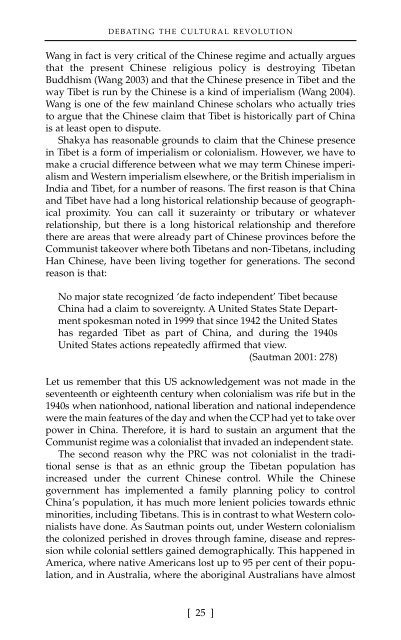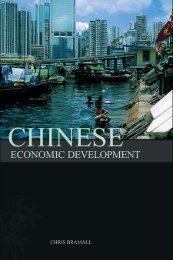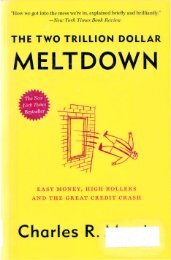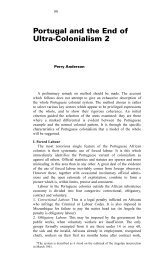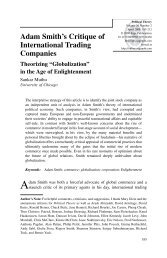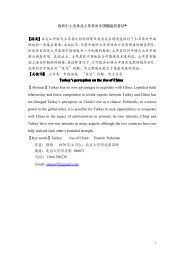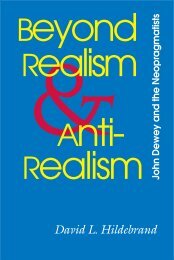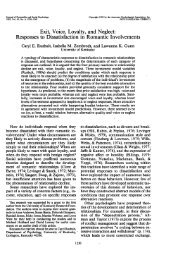Battle for China's Past : Mao and the Cultural Revolution
Battle for China's Past : Mao and the Cultural Revolution
Battle for China's Past : Mao and the Cultural Revolution
Create successful ePaper yourself
Turn your PDF publications into a flip-book with our unique Google optimized e-Paper software.
DEBATING THE CULTURAL REVOLUTION<br />
Wang in fact is very critical of <strong>the</strong> Chinese regime <strong>and</strong> actually argues<br />
that <strong>the</strong> present Chinese religious policy is destroying Tibetan<br />
Buddhism (Wang 2003) <strong>and</strong> that <strong>the</strong> Chinese presence in Tibet <strong>and</strong> <strong>the</strong><br />
way Tibet is run by <strong>the</strong> Chinese is a kind of imperialism (Wang 2004).<br />
Wang is one of <strong>the</strong> few mainl<strong>and</strong> Chinese scholars who actually tries<br />
to argue that <strong>the</strong> Chinese claim that Tibet is historically part of China<br />
is at least open to dispute.<br />
Shakya has reasonable grounds to claim that <strong>the</strong> Chinese presence<br />
in Tibet is a <strong>for</strong>m of imperialism or colonialism. However, we have to<br />
make a crucial difference between what we may term Chinese imperialism<br />
<strong>and</strong> Western imperialism elsewhere, or <strong>the</strong> British imperialism in<br />
India <strong>and</strong> Tibet, <strong>for</strong> a number of reasons. The first reason is that China<br />
<strong>and</strong> Tibet have had a long historical relationship because of geographical<br />
proximity. You can call it suzerainty or tributary or whatever<br />
relationship, but <strong>the</strong>re is a long historical relationship <strong>and</strong> <strong>the</strong>re<strong>for</strong>e<br />
<strong>the</strong>re are areas that were already part of Chinese provinces be<strong>for</strong>e <strong>the</strong><br />
Communist takeover where both Tibetans <strong>and</strong> non-Tibetans, including<br />
Han Chinese, have been living toge<strong>the</strong>r <strong>for</strong> generations. The second<br />
reason is that:<br />
No major state recognized ‘de facto independent’ Tibet because<br />
China had a claim to sovereignty. A United States State Department<br />
spokesman noted in 1999 that since 1942 <strong>the</strong> United States<br />
has regarded Tibet as part of China, <strong>and</strong> during <strong>the</strong> 1940s<br />
United States actions repeatedly affirmed that view.<br />
(Sautman 2001: 278)<br />
Let us remember that this US acknowledgement was not made in <strong>the</strong><br />
seventeenth or eighteenth century when colonialism was rife but in <strong>the</strong><br />
1940s when nationhood, national liberation <strong>and</strong> national independence<br />
were <strong>the</strong> main features of <strong>the</strong> day <strong>and</strong> when <strong>the</strong> CCP had yet to take over<br />
power in China. There<strong>for</strong>e, it is hard to sustain an argument that <strong>the</strong><br />
Communist regime was a colonialist that invaded an independent state.<br />
The second reason why <strong>the</strong> PRC was not colonialist in <strong>the</strong> traditional<br />
sense is that as an ethnic group <strong>the</strong> Tibetan population has<br />
increased under <strong>the</strong> current Chinese control. While <strong>the</strong> Chinese<br />
government has implemented a family planning policy to control<br />
China’s population, it has much more lenient policies towards ethnic<br />
minorities, including Tibetans. This is in contrast to what Western colonialists<br />
have done. As Sautman points out, under Western colonialism<br />
<strong>the</strong> colonized perished in droves through famine, disease <strong>and</strong> repression<br />
while colonial settlers gained demographically. This happened in<br />
America, where native Americans lost up to 95 per cent of <strong>the</strong>ir population,<br />
<strong>and</strong> in Australia, where <strong>the</strong> aboriginal Australians have almost<br />
[ 25 ]


